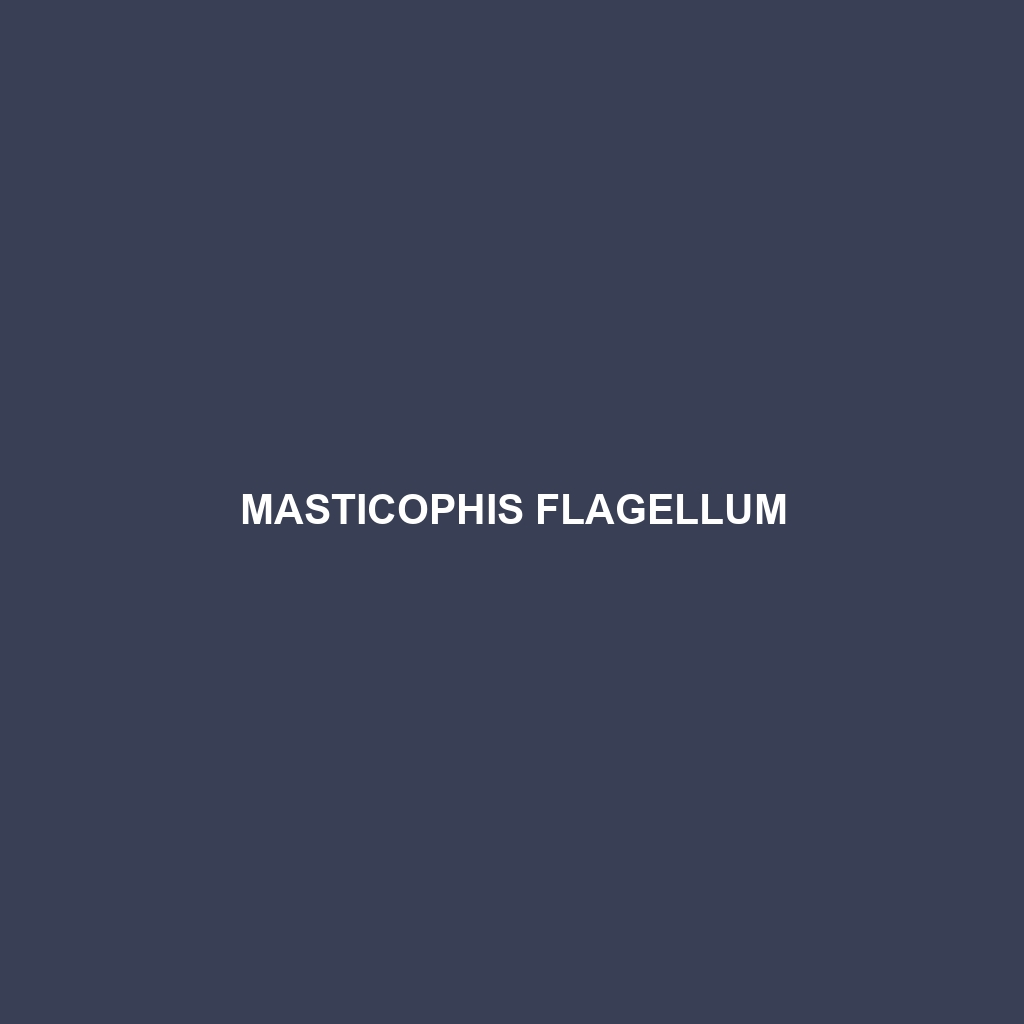Common Name
Masticophis flagellum
Scientific Name
Masticophis flagellum
Habitat
Masticophis flagellum, commonly known as the coachwhip snake, is primarily found across a variety of habitats throughout North America, particularly in the southeastern United States. These snakes thrive in diverse environmental conditions, including open grasslands, scrublands, and sandy deserts. They are particularly prevalent in regions such as the Gulf Coast and parts of Texas, where the climate is predominantly warm and arid. Their presence can also be noted in temperate forests and along edges of forests and wetlands. The adaptability of Masticophis flagellum allows them to occupy landscapes that range from dry, sunny areas to more humid settings, showcasing their resilience to different climatic conditions.
Physical Characteristics
Masticophis flagellum is easily recognized by its long, slender body, typically ranging from 3 to 8 feet in length, with some individuals reaching up to 10 feet. The coloration usually consists of a base of pale yellow, cream, or light brown adorned with distinctive darker stripes along the length of the body. This coloration is not only striking but serves as effective camouflage against potential predators. They have a pointed snout and large, round eyes that enhance their keen eyesight, allowing them to navigate their environments with agility. One unique feature of the coachwhip snake is its ability to shed its skin frequently, which aids in growth and health maintenance.
Behavior
The behavior of Masticophis flagellum encompasses a range of interesting traits. They are primarily diurnal, meaning they are active during the day. Their behavior is characterized by swift movements, as they can easily sprint to escape threats or catch prey. During the mating season, which occurs in spring, male coachwhips engage in elaborate displays of courtship, showcasing their vibrant coloration to attract females. Additionally, these snakes are known for their defensive tactics, including vibrating their tails when threatened, mimicking the sound of a rattlesnake, which can deter potential predators. Such nocturnal behavior has been documented when hunting for smaller prey items during the cooler night hours.
Diet
Masticophis flagellum is classified as a carnivore with a diet primarily consisting of small mammals, lizards, frogs, and insects. This snake is known for its remarkable speed and agility, enabling it to ambush or chase down prey effectively. Coachwhips are opportunistic feeders, meaning they will consume a variety of food sources as they become available. Their hunting technique largely involves stalking and rapid pursuit, capitalizing on their keen senses to locate prey in open and bushy areas.
Reproduction
The reproductive cycle of Masticophis flagellum typically begins in the spring when male snakes become highly territorial and engage in courtship displays. The mating season lasts through late spring to early summer, with females laying eggs in early summer. Depending on environmental conditions, the gestation period lasts about 60 to 80 days. Females can lay clutches of 5 to 20 eggs, which she abandons shortly after laying. The hatchlings emerge in late summer or early fall, measuring around 8 to 12 inches long. They reach maturity in 2 to 3 years, with parental care being negligible post-hatching.
Conservation Status
The conservation status of Masticophis flagellum is currently classified as “Least Concern” according to the IUCN (International Union for Conservation of Nature). This designation reflects the species’ stable populations across much of its range. However, habitat destruction due to urban expansion, agriculture, and pollution poses significant threats. Conservation efforts focus on preserving their natural habitats and reducing human-wildlife conflicts, especially in areas where development encroaches on their territory.
Interesting Facts
One interesting fact about Masticophis flagellum is its remarkable speed, which can reach velocities of up to 4 miles per hour. This makes it one of the fastest snakes in North America. Additionally, their long slender bodies enable them to move fluidly through grass and underbrush, allowing for quick escapes from predators. Another unique adaptation of the coachwhip snake is its ability to tolerate a range of environmental conditions, enabling it to thrive in both dry deserts and moist grasslands.
